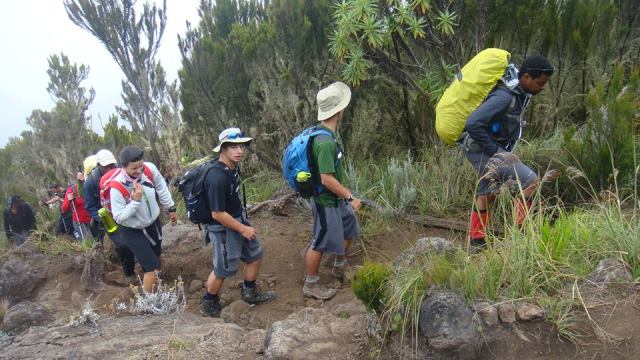Kilimanjaro climbing cost – How Much Does it Cost to Climb Kilimanjaro?.
Many people look for a cheap Kilimanjaro climb. But if you have done some research, then you have already found that this is not possible. And you probably have also discovered that there are a wide range of prices charged for climbing Mount Kilimanjaro by different outfitters. There are more than 200 licensed operators on Mount Kilimanjaro. The choices may be overwhelming. The bad news is that there are not many reputable operators, so who you choose to climb with is crucial to your success and overall experience. However, if you disregarded the questionable companies, you would be left with only a couple dozen or so quality Kilimanjaro operators.
First and foremost, do not make your decision based on price alone. Price should be only one component of your overall decision. High altitude trekking is not the place to shop for a cheap “deal”, nor is it the place to overpay needlessly. What you are looking for is high quality service at a reasonable price. Kilimanjaro climbing cost. Kilimanjaro climbing cost.
We often are asked how we can be priced thousands of dollars less than the luxury operators.
There are minimum expenses every Kilimanjaro operator faces, such as park fees, staff wages, food, equipment, transportation and other logistical costs. Kilimanjaro National Park (KINAPA) entrance and camping/hut fees by far make up the biggest expense, costing over $130 per climber per day. The other significant expenses are staff wages, food, and transportation costs. Local wages amount to around $40-$80 per climber per day (depending on group size). Food costs come out to about $10-$20 per climber per day (includes food for staff). Transportation costs are about $100 per trip depending on the route. There are also costs associated with wear and tear on camping equipment and administrative costs for arranging your climb. By adding up all the daily costs listed here, you can estimate what it may cost to fund a Kilimanjaro climb on your own. So instead of asking how we can be priced so low, you should be asking how those other companies can be priced so high?. Kilimanjaro climbing cost. Kilimanjaro climbing cost.
Luxury Operators. Kilimanjaro climbing cost. Kilimanjaro climbing cost.
Do not assume that a high cost operator is providing a superior climb for the money.
Do not assume high priced operators are better simply because they charge more. These operators pitch extraordinarily high success rates, greater safety standards and added luxury… and then they take advantage of you by charging exorbitant fees. Do not be misled. It is mind boggling that some operators will charge $4,000, $5,000, even more than $6,000 per person for large parties on standard itineraries. It does not cost that much to climb Kilimanjaro! There is absolutely zero justification for these kinds of prices and the premium you pay does not translate into a better experience. It goes directly to the luxury operator’s bank account.
The high priced operators are typically international companies, some of whom use foreign guides. But ask yourself, who knows the mountain better? A foreign guide, flown in for a few climbs per year, or a local guide, who has encountered and handled various situations, with hundreds of clients, during his many years of climbing? Who can better tell you about the trail, the wildlife, the fauna, and culture? The luxuries provided by these operators can be silly. A full size sleeping cot – on a mountain expedition? A portable shower – at these low temperatures? Bottled water on the entire trek – instead of collecting water from nearby streams?.
The high priced operators heavily market the added safety of using pulse oximeters, oxygen and Gamow bags. But tests show that pulse oximeters are unreliable in the detection of altitude sickness (we use pulse oximeters only as a secondary measure to monitor climbers). Some “safe” operators supply “personal oxygen systems” such as Altox to boost climbers, so they can climb higher – a truly dangerous practice. Nobody actually believes this is a good idea yet it does not stop some companies from pitching this to their clients (we carry oxygen for use only in rescue situations, as a complement to descent). And the use of Gamow bags on the mountain is unheard of, because descent is the best, and always available, remedy. Nonetheless, there are those who are more comfortable paying inflated prices to climb Kilimanjaro. We provide the same safety measures, or better, but you don’t have to pay thousands more to have them!
Budget Operators. Kilimanjaro climbing cost.
Avoid the cheap, low budget operators; they are downright dangerous.
Local Tanzanian companies are primarily made up of low budget operators. Because these are often unestablished, desperate, poorly run companies, they use low prices as their only way to attract clients. Their practice of undercutting each other has resulted in dangerous situations on the mountain. By reducing prices too far, there is simply no way for these operators to provide satisfactory services without skimping on necessary expenditures. It’s a certainty that they cannot meet the requirements for a decent climb.
